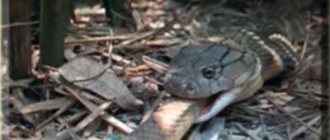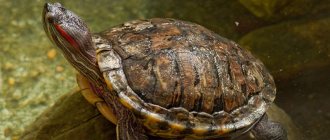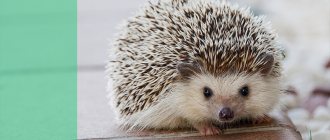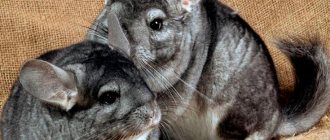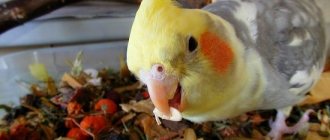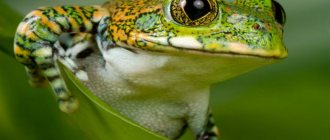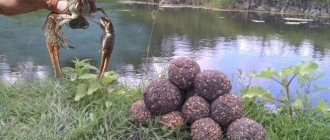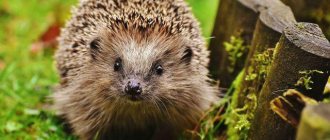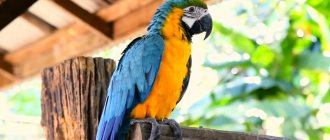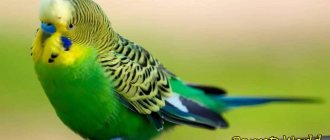Lizards are amazing reptiles. Most species (and there are more than 3,800 of them) are predators. Only a few are so-called “vegetarians”. Despite the fact that they are predators, for the most part they do not pose any threat to humans. Moreover, they can even become a true friend. It is for this reason that people often keep them at home, in specially equipped aquariums. And in today’s article we would like to talk about what lizards eat at home, in the wild, and what they should not eat.
Sandy lizard in nature
To avoid problems keeping this exotic animal at home, you need to know about its environment and living conditions. When walking in the forest, many see these nimble lizards, which are green or brown in color. They quickly hide in the grass or bushes if they notice danger. This species is called nimble lizards.
They are very common in Russia and are found in many areas. For this reason, the habitat also varies . These can be swampy areas of the territory, forests, steppes, dry rocky places. The main time of activity for fast lizards is during the day. It can move both on the ground and climb trees and rocky slopes.
This type of lizard, settling in the territory, sometimes digs a narrow hole for living. When they go hunting, they do not run more than 20 meters from the hole. This allows them, sensing danger, to quickly return to their shelter. The size of the sand lizard can vary.
Depending on the subspecies, the length varies from 5 to 25 centimeters. Females are usually slightly smaller than males and have less bright colors. The belly of females has a white or yellowish tint, while that of males is greenish-yellow.
If you suddenly grab such a wild lizard by the tail, it will try to bite, and then throw off the tail and disappear from sight. In such cases, they do not bleed, because the muscles in the place where the tail is folded back contract sharply.
After some time, a new tail grows. But in most cases it is already a little shorter than the previous one. This feature is important to consider if you keep an animal at home.
Brittle spindle (spindle)
No, it's not a snake at all. We have already told you in detail which snakes are found in central Russia.
In the photo there is a spindle, albeit legless (or rather, pseudo-legged), but a completely real lizard, which may well settle on your site if there are snags, rodent burrows, bales of compressed hay or shaded, damp places where it prefers to hide during the day.
The spindle leads a secretive lifestyle, is active at dusk and at night, and hides most of the time. But in the spring, after hibernation, it can often be found basking in the sun on a sandy path or lawn. The lizard goes to wintering until the end of September.
This is a completely harmless and very useful animal for the garden plot. The legless lizard feeds on earthworms, terrestrial mollusks, in particular, naked slugs, centipedes, woodlice, as well as insects and their larvae.
In some regions of Russia, the spindle is listed in the Red Book.
Outwardly, it is a densely built “snake” 40-50 cm long, brown or bronze in color with a light belly and absolutely no “neck” - this, along with movable eyelids, is its main difference from snakes. Males may have rows of dark spots or stripes on their backs. Eyes with round pupils. Like many lizards, the spindle can throw off its tail.
Young lizards are born in early June - the female brings from 3 to 26 cubs 38-50 mm long. Babies are born in a transparent egg shell, which they immediately tear and crawl in different directions - this process is called ovoviviparity. Immediately after birth, lizards are mobile and independent.
Spindles are quite slow and completely non-aggressive; they can be picked up without fear and even tamed. Unfortunately, because of its harmlessness, this reptile very often falls under the “hot hand” of poorly educated people.
Creating a terrarium at home
a terrarium specially created for this purpose . A lizard running freely at home can be injured. There are no rules as such for the size and shape of a home.
There are only some restrictions inherent in their habits. The height of the walls should be at least twice the length of the amphibian. This is because they can easily climb vertical planes.
As a material, you can choose glass from an old aquarium. The top cover should be made of wire mesh. There should also be holes for ventilation in the side walls. Some people make a terrarium out of an old book shelf.
In this case, ventilation holes are made in the top cover and side wall. The bottom is covered with soil. For example, coarse sand, pebbles or ordinary soil. It is advisable the interior of the terrarium with branches, pieces of wood, slides and small caves. The wild lizard will love it.
When keeping a lizard at home, the terrarium should have two temperature zones. In the so-called cold zone it should be no more than 30 degrees, and in the hot zone about 36 degrees.
An important point to consider is that if a reptile appears healthy but refuses to eat, this is not necessarily the cause of any illness. It is quite possible that she is not comfortable with the ambient temperature or has decided to have a fasting day. This is normal .
Source materials
Making a terrarium with your own hands is a rather painstaking and time-consuming task, but as a result you can get a product of the appropriate size and adapted for a certain type of exotic pet. A system made to individual dimensions will be easy to install in a specific niche or any other opening.
Silicate and organic glass are best suited for making a terrarium.
The benefits of using such material are as follows:
- difficult to break;
- the plexiglass box retains heat well;
- plexiglass fragments rarely have sharp edges;
- organic glass is easy to process.
Don’t forget to prepare the source material
. But this material also has certain disadvantages:
- If the finished product is not used correctly, scratches appear on the surface of the walls. For this reason, you should wash the glass only with a soft flannel cloth or gauze. It is unacceptable to use hard sponges, scraping devices or chemicals with fine-grained fillers.
- When exposed to sunlight, the plane of plexiglass loses its transparency and begins to become cloudy and fade.
Only those residents who do not have claws can live in a terrarium made of such material:
For animals with claws (lizards and turtles), the main box should be made of other materials.
In addition to glass, you will need to purchase:
- plastic corners;
- durable aluminum mesh for the ventilation system;
- plastic profiles for making a doorway in two sizes (their depth must correspond to the thickness of the material intended for making doors).
In this video you will learn how to make a terrarium:
Selection of organic glass
Of course, you can make a terrarium for your pets from ordinary glass, but this process is much more complicated and requires experience and skills from the master. Glass is quite fragile, cracks and breaks easily.
To choose plexiglass suitable for making a terrarium, it is enough to know that it comes in two types:
There are 2 types of plexiglass
Choosing the right adhesive
The modern chemical industry offers consumers a wide range of different adhesive compositions. In order to choose the right adhesive, you need to consider several principles.
- harmless to the health of humans and their pets (do not form toxic chemical compounds and do not emit unpleasant odors upon contact with food, water and animal excrement);
- durable;
- waterproof.
Equipment and tools
Before you begin, you should prepare the following tools:
- glass cutter;
- sandpaper;
- ruler;
- glass marker;
- well sharpened knife;
- a rectangular load with a smooth flat surface;
- double-sided tape;
- well sharpened scissors.
During the work, you will need rags to remove the remaining adhesive from the surface of the glass and hands.
There are a number of requirements for glue
Types of lizards
Based on the type of food consumed, lizards are divided into three types: carnivores, herbivores and omnivores. True, in the wild the division into species is often very arbitrary.
It is quite possible to find a sand lizard that has a mixed diet. She will not refuse fruits and vegetables, as well as insects and small mammals. Despite this, you should consider each type of food separately in order to understand what to feed your lizard at home.
Carnivores or meat eaters
The following food is suitable as food for this species:
- Insects,
- worms,
- fish,
- cockroaches,
- snails
This species is very picky about food and feeding it at home will not cause any difficulties. But the cost of food will be directly dependent on the quality of food and the size of the reptile. The main food source should be insects, flies, locusts, worms, grasshoppers and cockroaches.
If the size of the lizard requires larger food, then you can sometimes treat it with small mice, rats or frogs. Before feeding such food, it is recommended to give rodents an injection containing vitamins and calcium. Thus, the reptile’s body will be additionally enriched with calcium after it eats this rat or small mouse.
You can offer simple meat or fish from time to time. But in this case, be careful. Before you give your lizard a treat, it is important to make sure that there are no parasites in the food. If you do not follow this rule, there is a high risk of infecting your reptile with intestinal disease.
Stick to the fact that everything should be in optimal quantities. Don't give too much meat or fish. And before giving such food, it is necessary to remove cartilage from meat and remove bones from fish.
Snails are the best food option for reptiles at home. It is very easy to breed this food. And thanks to the saturation of snail shells with calcium, this product is simply irreplaceable for almost all types of lizards.
It is not without reason that the diet recommended by veterinarians contains various sources of calcium: cuttlefish shells, egg shells and others.
Nutrient mixture and fertilizing
On your own, you can prepare a nutrient mixture that lizards really like. For this you will need meat and carrots (1:1). The meat needs to be ground in a meat grinder and the carrots grated. Next, mix it all, add a little lettuce leaves, calcium, and vitamin supplements. The nutritional mixture is ready.
Vitamins and minerals are necessary for the health, bright appearance, vigor and liveliness of lizards. They are not given in pure form, but must be mixed with food.
Most often, raw crushed eggshells, calcium glycerophosphate tablets, chalk and specialized preparations for reptiles are used.
Herbivores or herbivores
The main type of food for this type of lizard is various fruits and vegetables, for example:
- Grape,
- carrot,
- cabbage,
- apples,
- lettuce leaves,
- potato.
However, it is allowed to give these products in mixed form. But when feeding potatoes, be careful, as this product contains many different nitrates. Before treating your pet, peel the skin of such food and cut into small pieces.
When eating food occurs, carefully watch the lizard and try to understand its taste preferences. Subsequently, it will be possible to take into account her tastes when thinking through her diet.
, offer every two weeks . Predators need to be given plant foods.
Omnivores
Sticking to this type of diet is quite easy. You can feed wild lizards with all the food that is listed above for both predators and herbivores. But under no circumstances should you feed your reptile regular human food.
Their body is not adapted to such food and therefore the consequences can be unpredictable. This can lead to both poisoning and serious illness.
It is important to remember that these are cold-blooded animals. If the ambient temperature drops below 20 degrees, they will refuse to eat. For this reason, their terrarium must have a thermometer to monitor the temperature.
Feed your lizard at intervals every day. But if she refuses to eat, try reducing her meals to once every two days. If appetite does not return within a week, contact your veterinarian.
How to properly put a reptile into hibernation and bring it out of it
So, you have decided to send your pet for the winter. How to do this correctly so as not to harm the animal? Here is a list of your next steps:
- A month before the planned “rest”, we strengthen the diet with a variety of foods. If your pet is of normal weight, then you can skip this step.
- Now we don't feed the lizard for a week. This is necessary so that the intestines are completely cleansed before the animal goes into long hibernation.
- We begin to gradually reduce the temperature (by 5°C) in the aquarium. The temperature decrease should occur at intervals of 5-7 hours.
- We settle on a temperature comfortable for reptile hibernation – +5 °C.
- If your lizard stands in one place for a long time, this means that it has already fallen asleep and you did everything right.
How to feed a lizard
Young lizards are fed using tweezers. With its help, pets are given larvae, worms and all other living creatures. Since lizards love to climb trees, place food on the branches or on the high ground of the terrarium .
Some are diurnal, while others are nocturnal. Feed them during peak activity hours. Be sure to remove all leftover food. Many people like to drink water from the leaves of plants, while others will do just fine with a regular bowl of water. Monitor the water so that it is always fresh and clean.
If you got a lizard that was only recently born, then it still needs to be taught to eat. To do this, carefully grab the pet with one hand and use tweezers to move the larva over its mouth with the other. The reptile, licking itself, will begin to understand that this is food and will learn to eat on its own .
Please note that these are general guidelines. After you choose a specific type of lizard that you want to keep at home, read the information about caring for that particular species.

